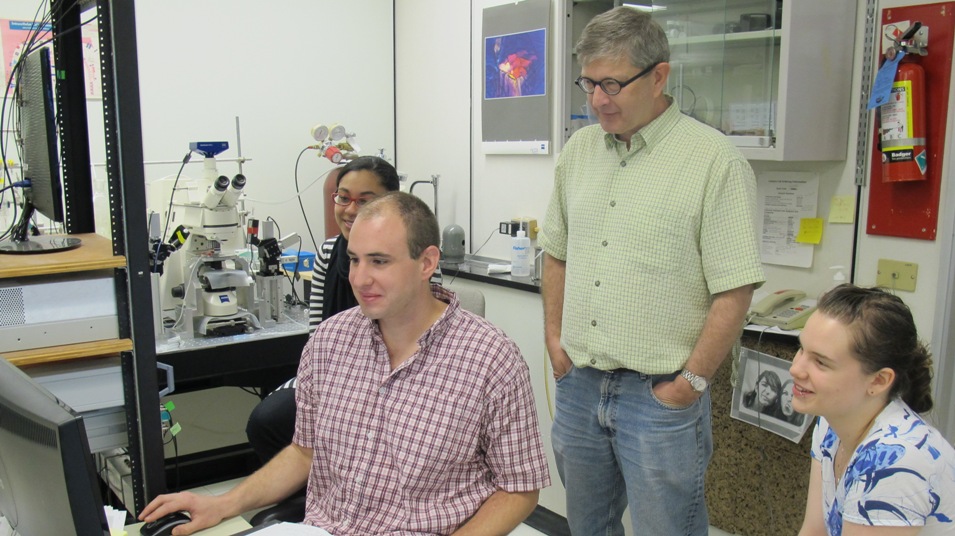
Dr. Bill Colmers, second from the right, reviews information with graduate and summer students.
Faculty of Medicine & Dentistry researchers Trevor Hamilton and Bill Colmers recently published findings in the Journal of Neuroscience about a chemical messenger known as Neuropeptide Y (NPY) which is linked to neurological and mood disorders such as obesity, epilepsy and anxiety. Both Hamilton and Colmers work in the Centre for Neuroscience at the University of Alberta.
Different parts of the brain communicate with one another using electrical and chemical signals, and long or short messages. Longer messages can cause brain cells to react with calcium ions.
When short messages and long messages are received within milliseconds of one another, brain cells start to react differently. This type of change is known as neuroplasticity, which is the cell-level basis for learning. The junction that allows the messages to be passed from one cell to another will become either more effective or less effective at sending signals with repeated incoming messages
Throughout a number of repetitions, Hamilton and Colmers discovered that NPY decreased the effectiveness of signal transmission in nerve cells in the neocortex area of the brain. When NPY is not present, the brain cell automatically fires a longer message in response to the original signals it received.
"If you pair a short message with a calcium influx in these cells, it actually causes forgetting. When NPY is released, it prevents those neurons from forgetting that bit of memory so it sticks around longer," said Colmers.
Hamilton added: "This work will help with the overall understanding of memory formation and may contribute to Alzheimer's disease research."
NPY's interaction with the neocortex was a bit surprising. In 2010, Hamilton and Colmers examined how NPY interacts with the hippocampus, the part of the brain that forms memories. Though the actions were identical, the consequences were opposite: repetition showed the brain cells in the hippocampus become more effective with NPY.
"If you don't understand how something works in the first place, how are you going to fix it?" Colmers remarked on the future medical potential of the research, although both he and Hamilton emphasized that more progress is needed before these results move to the bedside.
Hamilton is an adjunct member of the Centre for Neuroscience and an assistant professor at Grant MacEwan University. Colmers is a professor of pharmacology and neuroscience at the U of A. This research was published in the Journal of Neuroscience on July 3, 2013 - link to article.